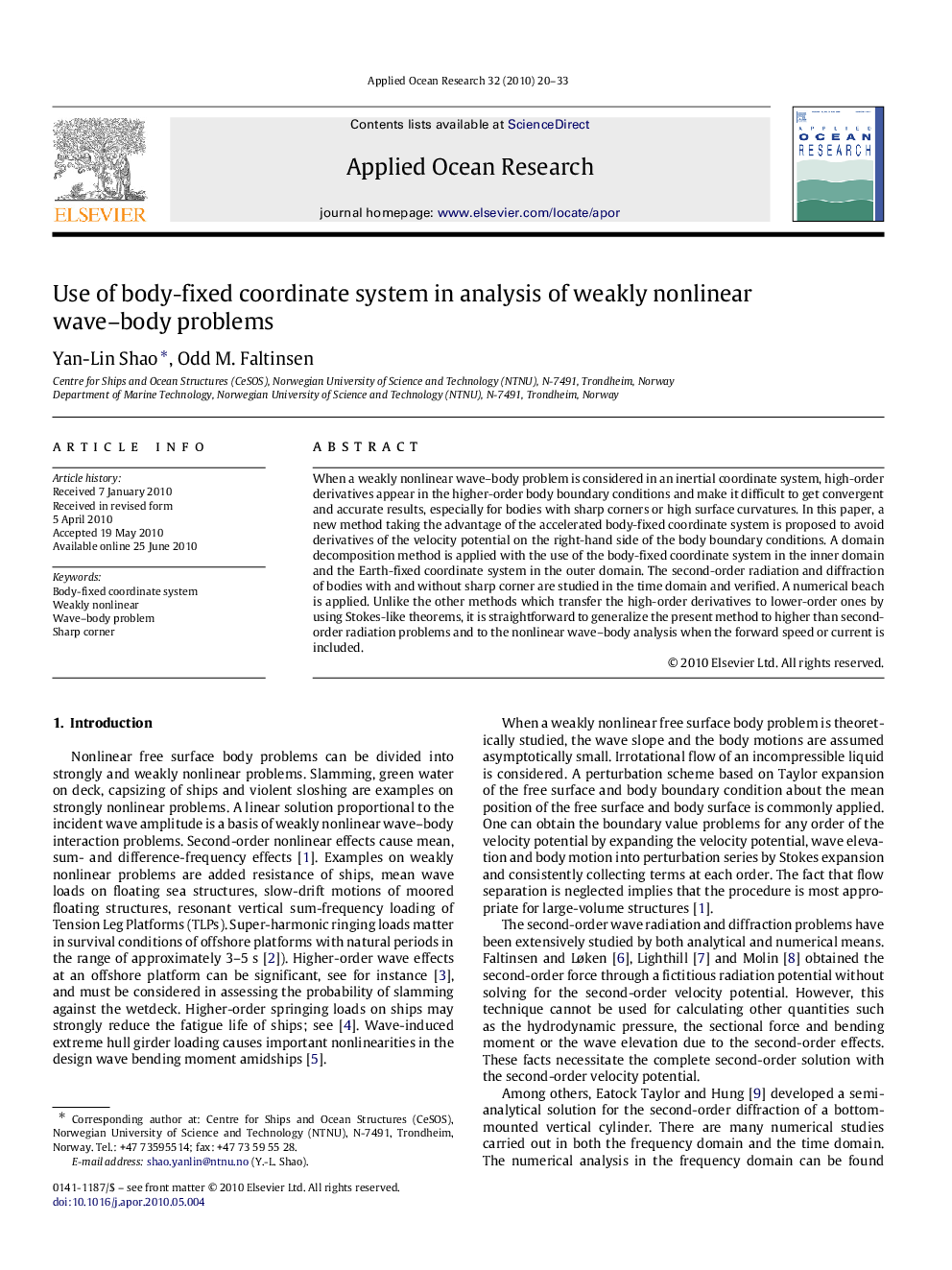| Article ID | Journal | Published Year | Pages | File Type |
|---|---|---|---|---|
| 1720316 | Applied Ocean Research | 2010 | 14 Pages |
When a weakly nonlinear wave–body problem is considered in an inertial coordinate system, high-order derivatives appear in the higher-order body boundary conditions and make it difficult to get convergent and accurate results, especially for bodies with sharp corners or high surface curvatures. In this paper, a new method taking the advantage of the accelerated body-fixed coordinate system is proposed to avoid derivatives of the velocity potential on the right-hand side of the body boundary conditions. A domain decomposition method is applied with the use of the body-fixed coordinate system in the inner domain and the Earth-fixed coordinate system in the outer domain. The second-order radiation and diffraction of bodies with and without sharp corner are studied in the time domain and verified. A numerical beach is applied. Unlike the other methods which transfer the high-order derivatives to lower-order ones by using Stokes-like theorems, it is straightforward to generalize the present method to higher than second-order radiation problems and to the nonlinear wave–body analysis when the forward speed or current is included.
